Now that we’ve given you a quick tour of An American Story, we’ll pull back the curtain to give you a behind-the-scenes look at the project.
Collecting slides has been a fun adventure—and we’ve learned a lot along the way!
What were we looking for?
An American Story began almost by accident when we stumbled across some interesting slides film in a thrift shop. Before long, we had found more…and then we had a collection on our hands! The more we reviewed, the more clear it became what we were looking for.
Slide Film
You may have noticed we don’t include negative film in this project. Why slides? Well, American amateur photographers made that choice for us. During the post-war period, slide film was incredibly popular. Slides also come with a few practical advantages: they are easy to review and sort using a light table (and without scanning), they’re usually well organized by the photographers themselves, and they’re easy to find (in thrift stores, on eBay, and at estates sales).
Family photos from the 1950s to the 1970s
Color slides were used from the late 1940s until early 2000s, but we found the most interesting subjects—and most slides—in slides taken during the 1950s-1970s, in other words, when the Baby Boomers were coming of age. (Or, if you prefer, between the Marshall plan and the oil crisis.)
Small family collections
Through this project, we wanted to get a snapshot of many, diverse lives. For that reason, we sought out small collections from a variety of families with a few hundred slides—rather than much larger collections produced by photographers at the time.
What did we find?
It’s fair to say, our search was successful! Since we began in January 2017, we have collected and sorted more than 30,000 slides. What’s remarkable, as we shared in our previous article, is the picture of America that these slides painted.
Below are few examples of what the slides looked like when we found them. It was common to find slides neatly organized and carefully labeled—ready for projecting on a white wall to share a story with family and friends!
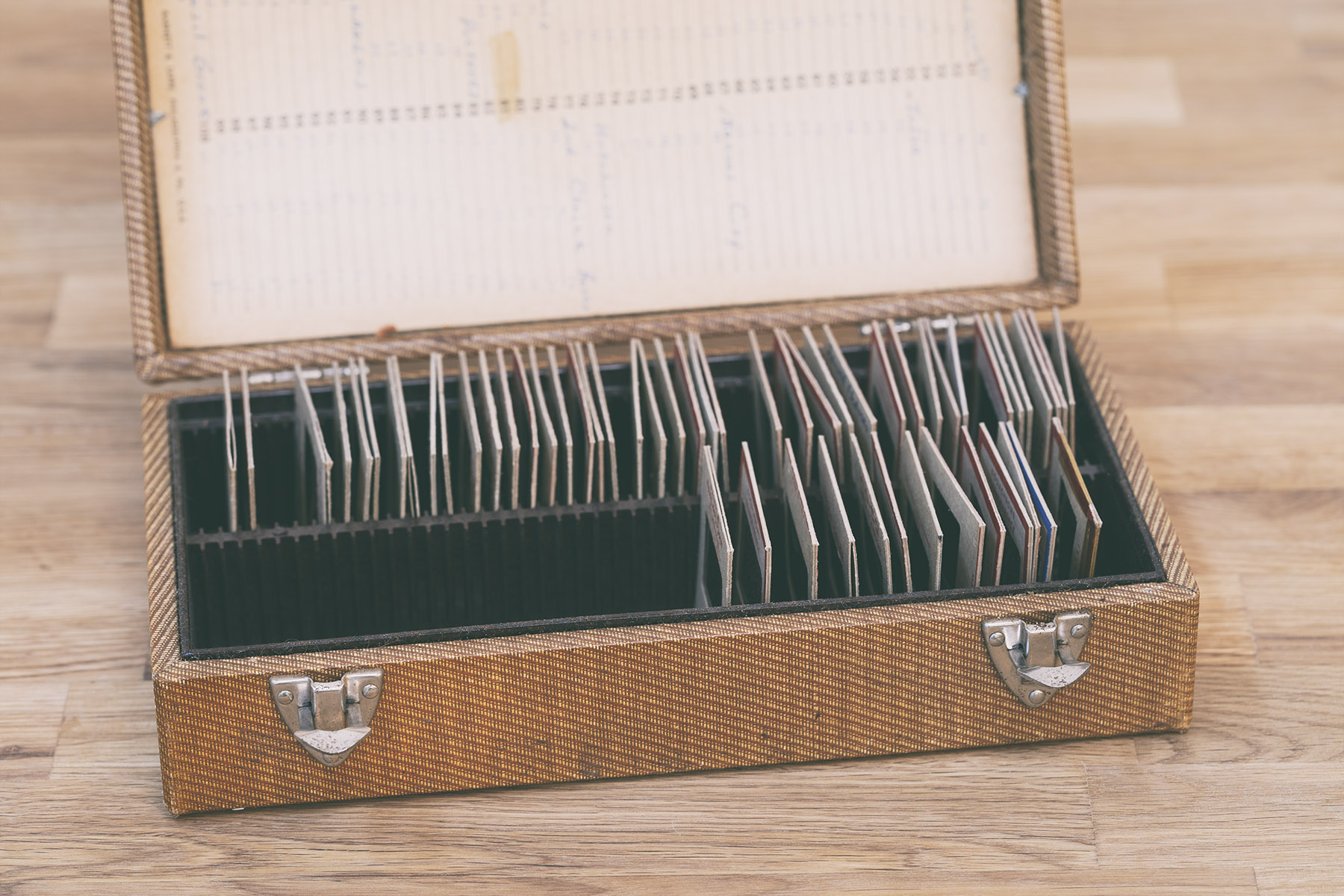 |
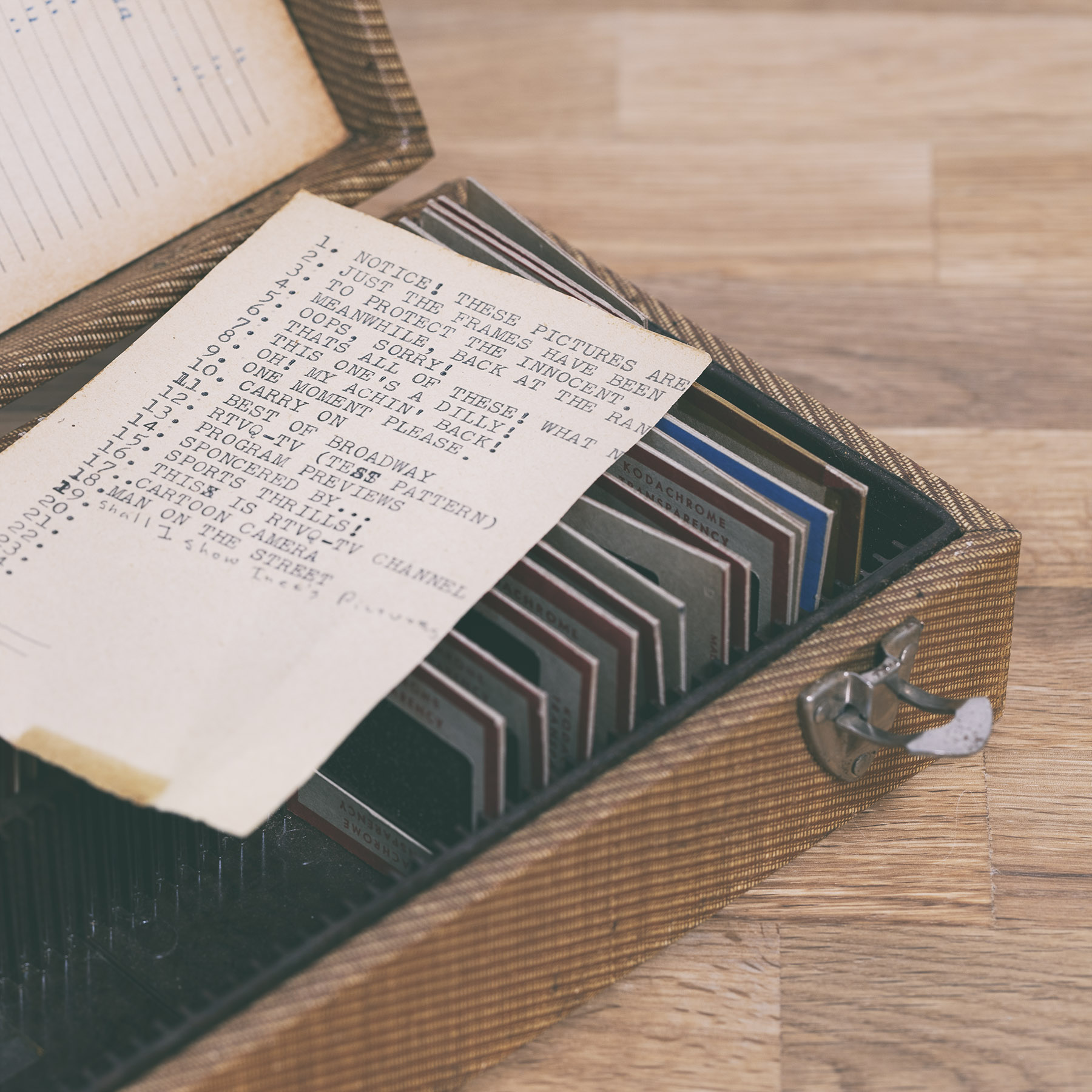 |
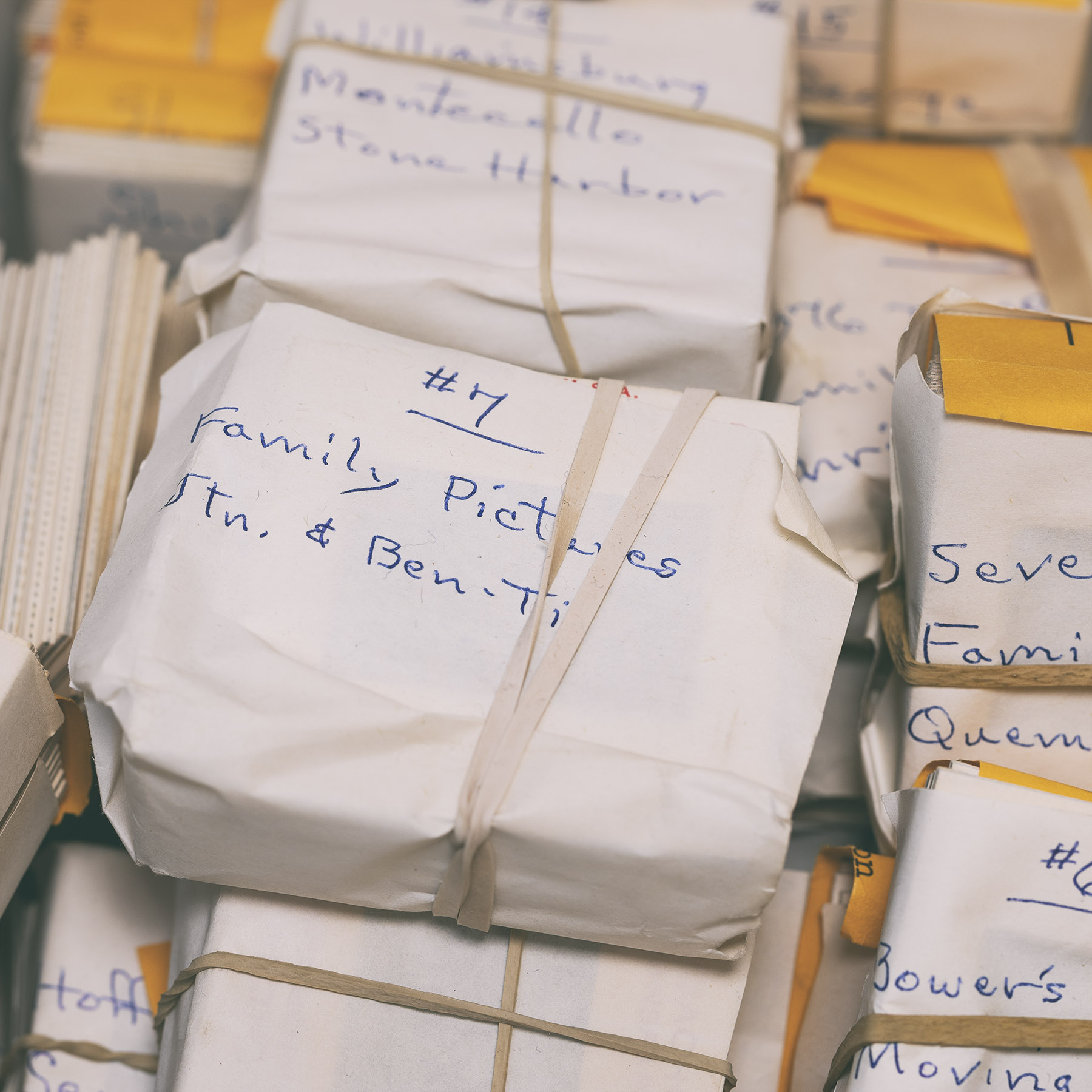 |
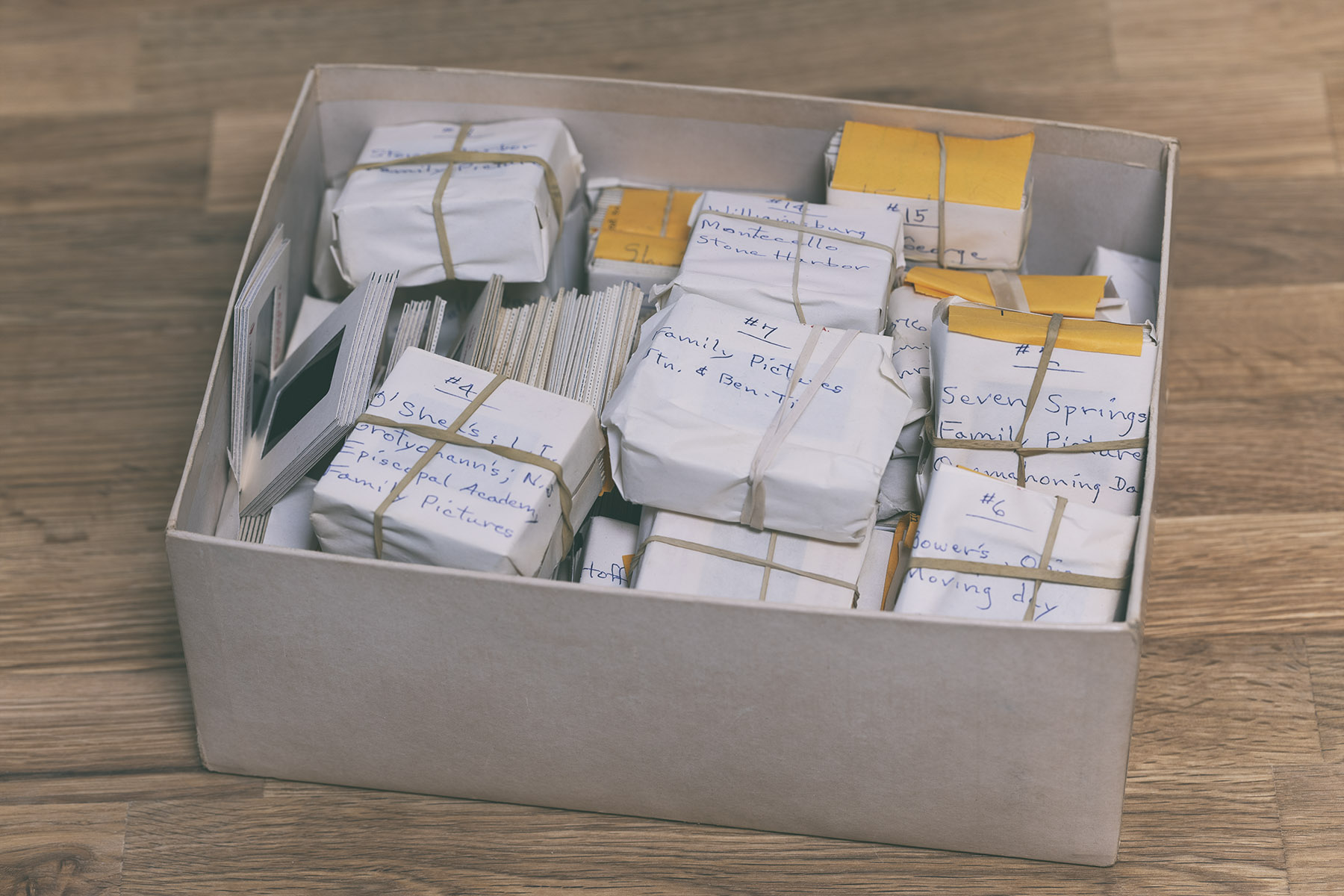 |
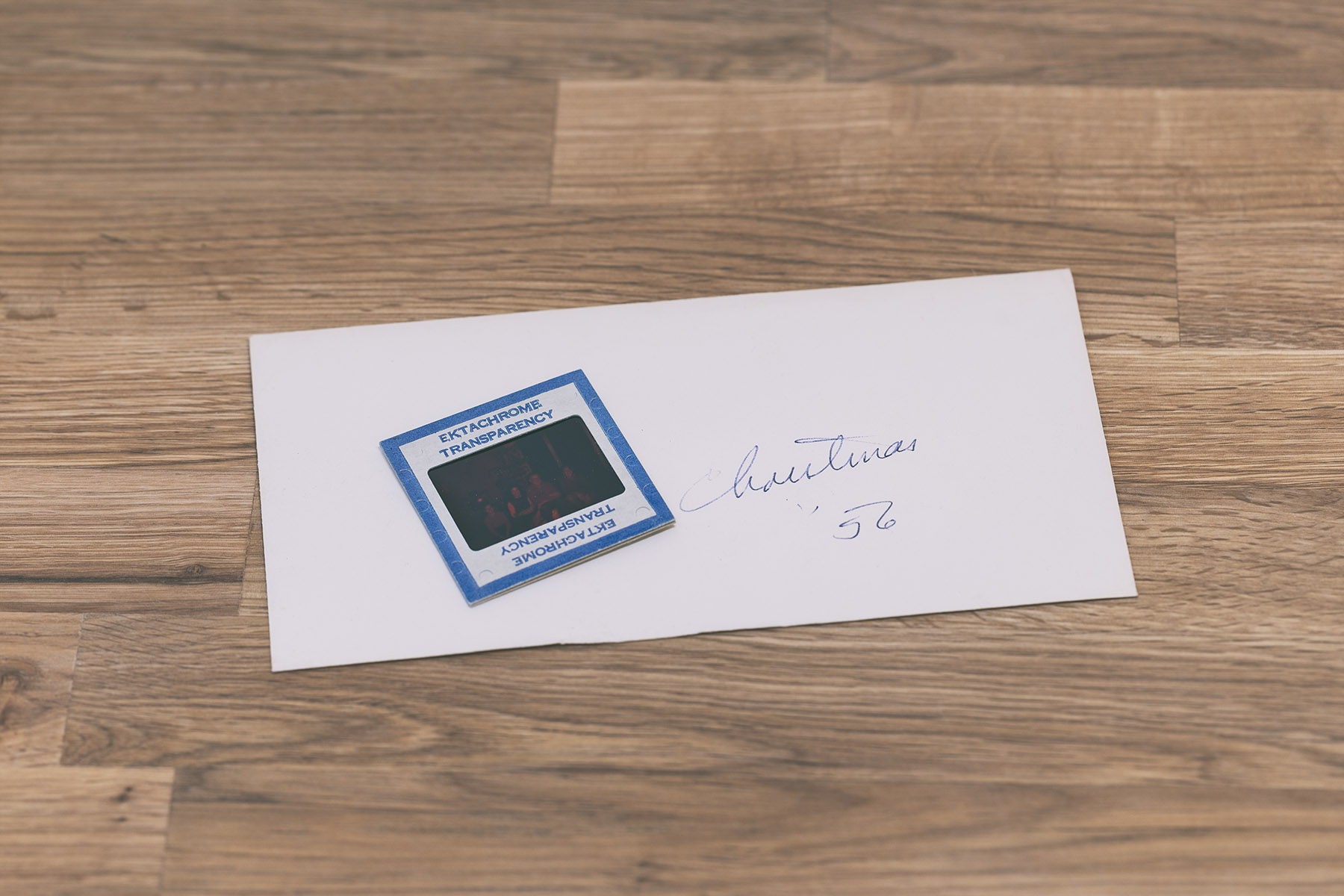 |
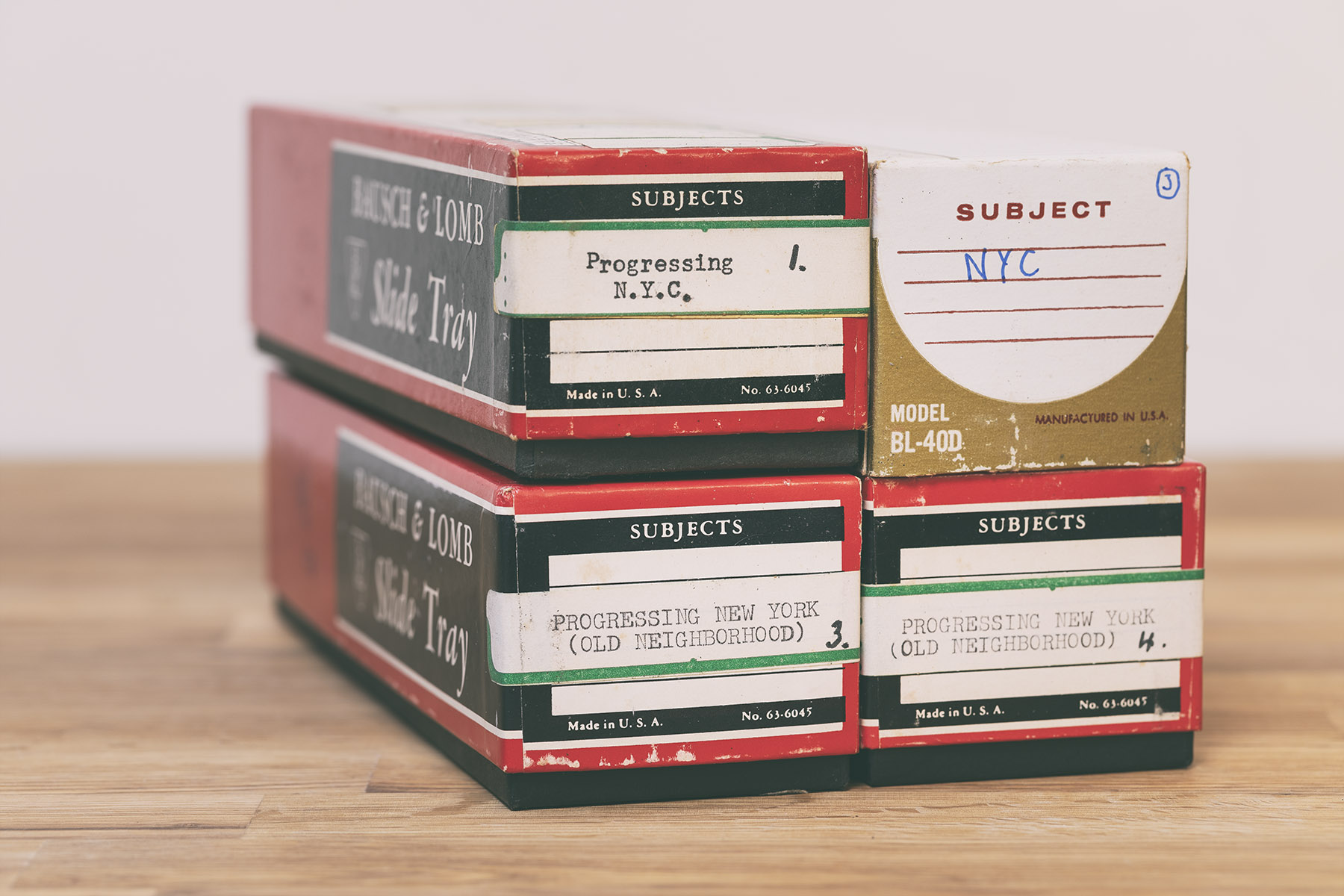 |
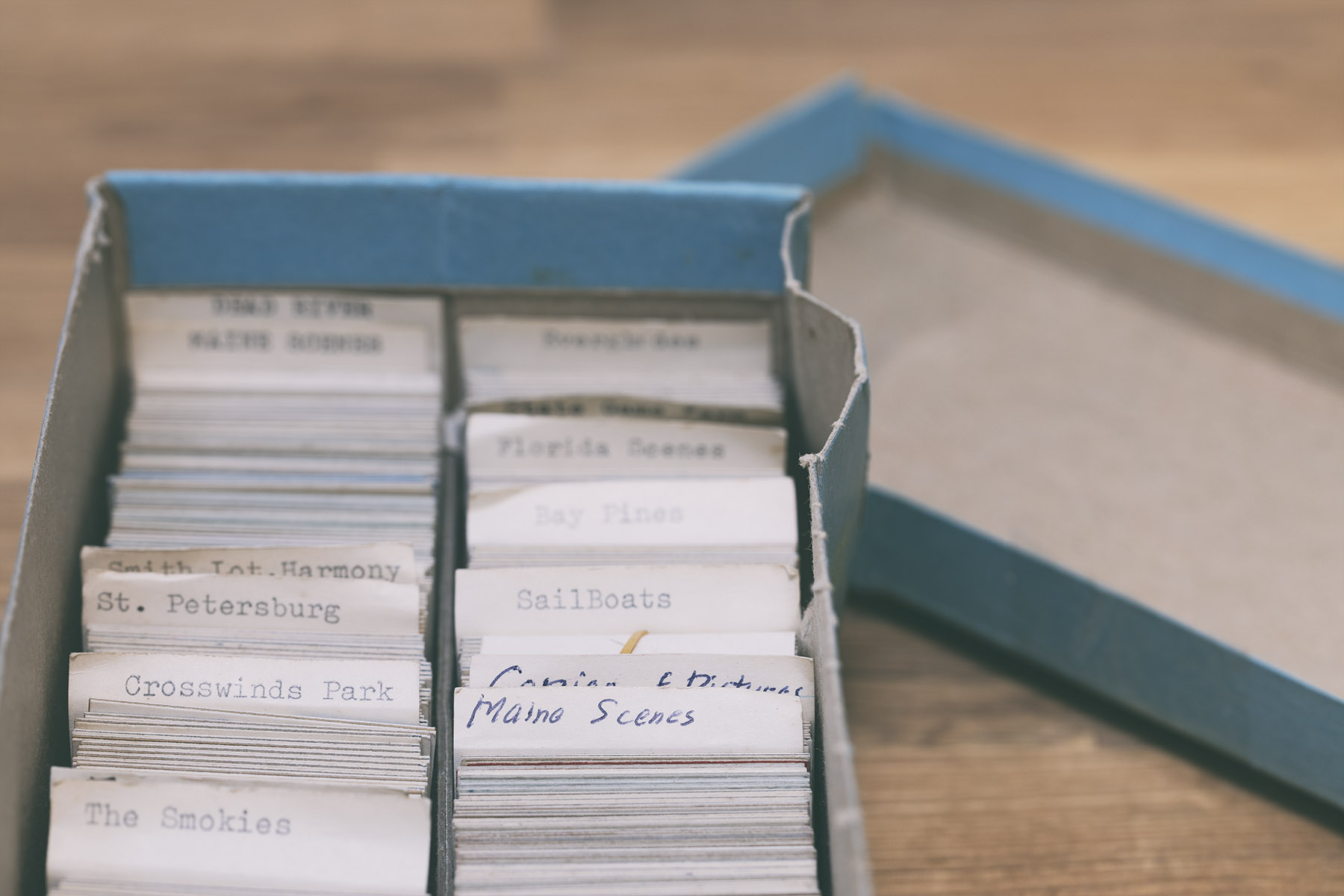 |
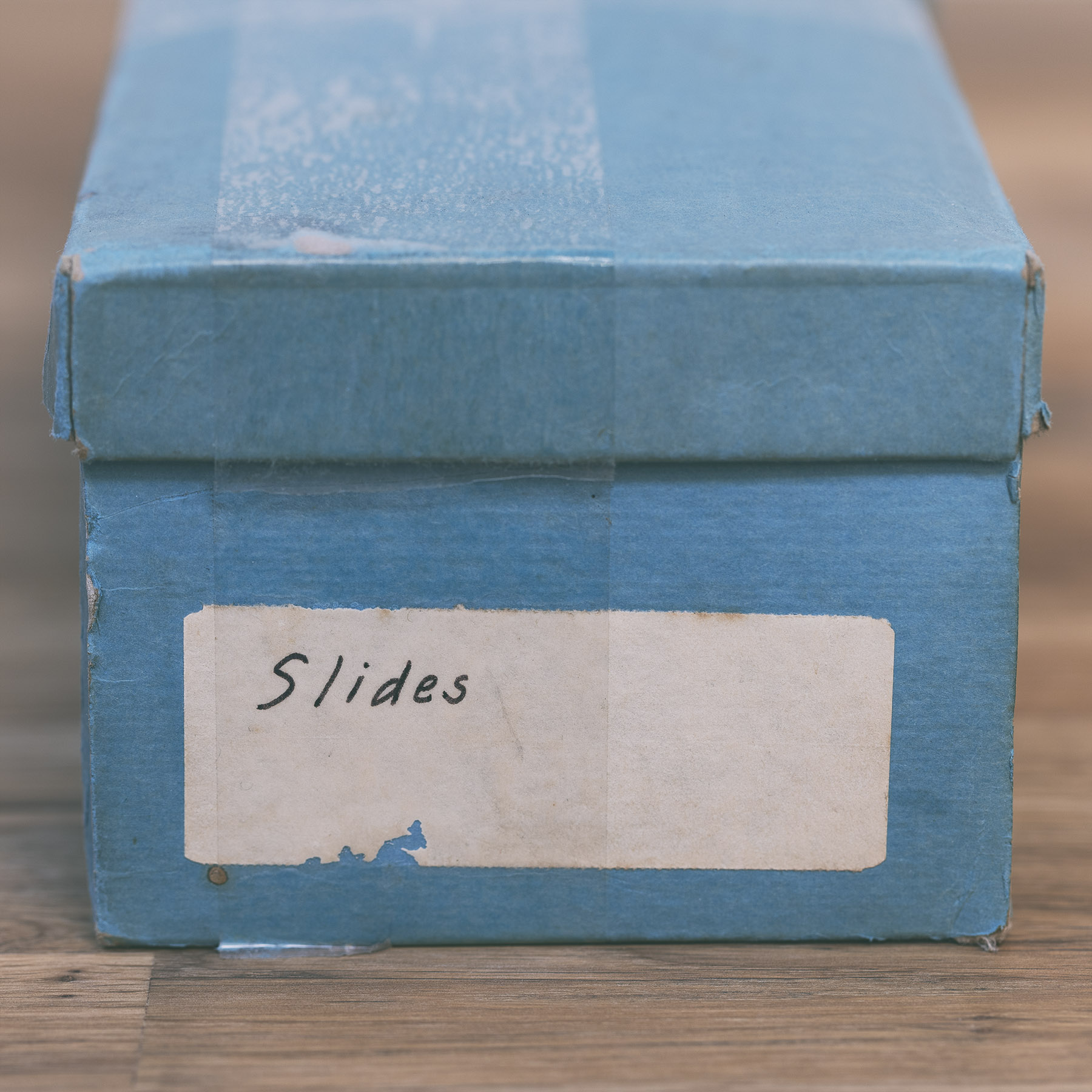 |
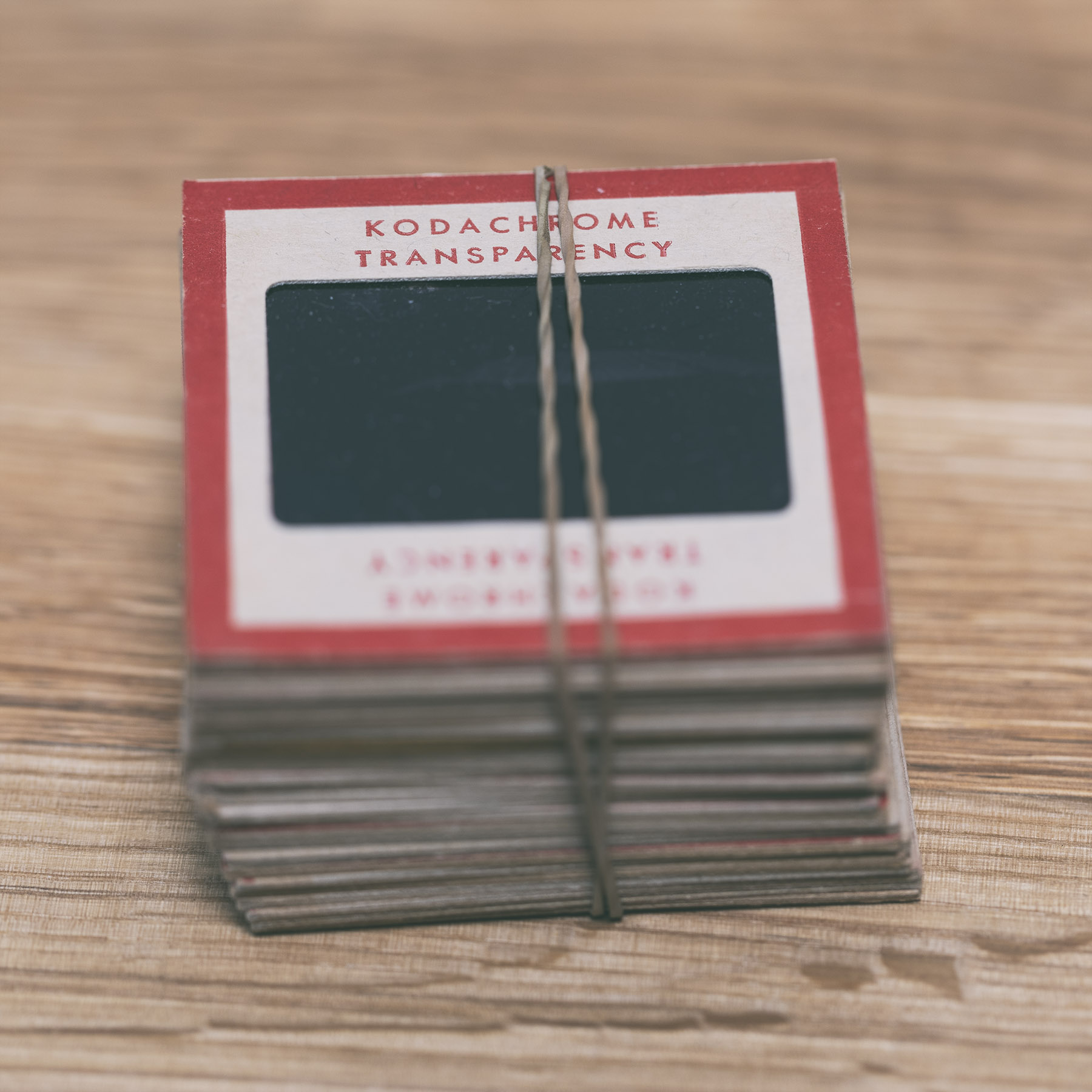 |
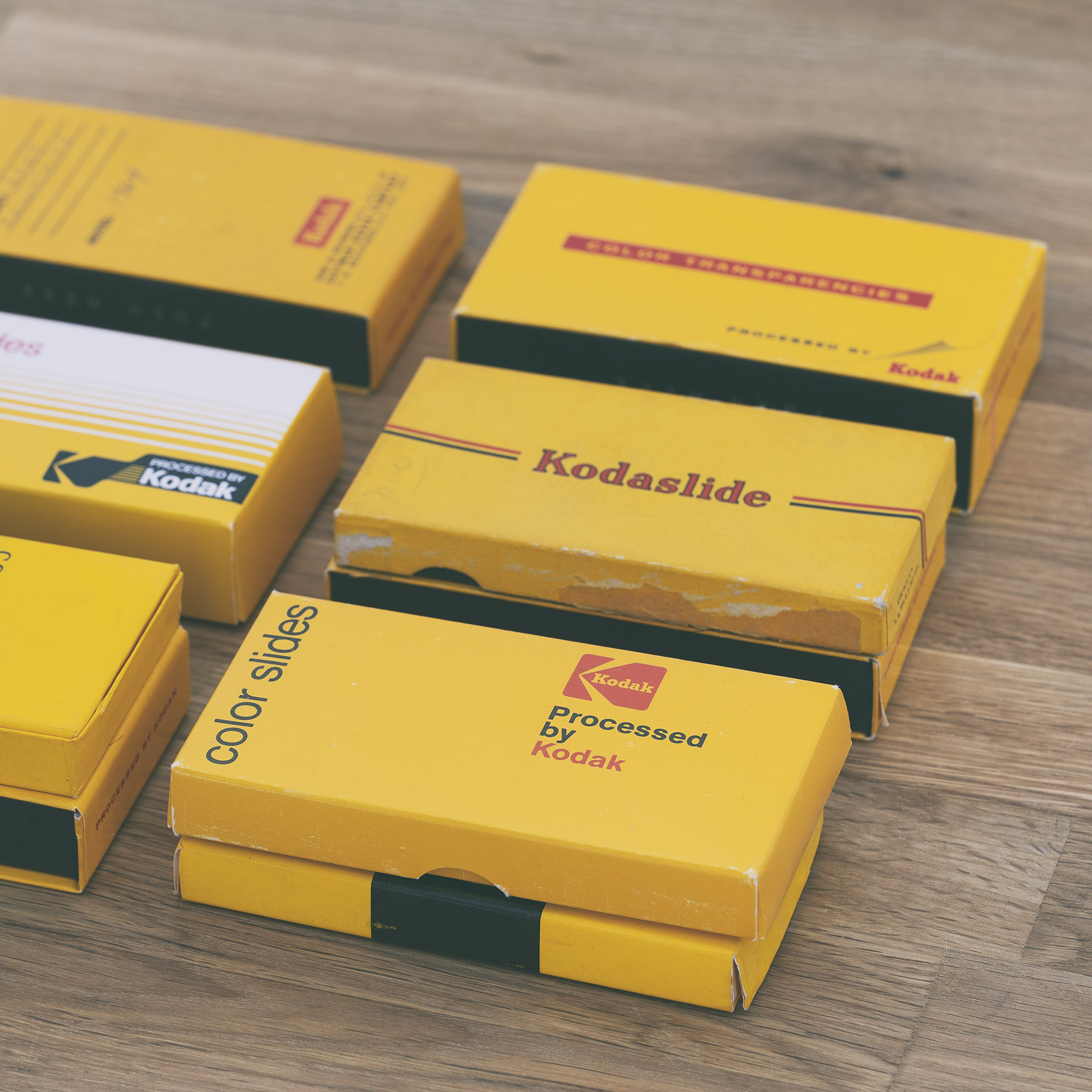 |
Side note: a quick history of Kodak slide film
Early in 2017, Kodak announced plans to bring back one of the most iconic slide films, Ektachrome.
The story of Ektachrome, its predecessor Kodachrome, and slide film in general is closely connected to our project. Since slides were introduced in the 1940s, millions of Americans have used them to document family life, vacations, and travel. Until the 1990s, slides were at the heart of almost every American family photo album.
In the course of producing An American Story, we collected slides of all kinds from various brands, such as Kodak, Fuji, and Agfa. Kodak’s products—Kodachrome and Ektachrome were by far the most common.
Through scanning thousands of slides, we developed a preference of our own: Kodachrome. The quality of color, definition, and the stability of these slides over time is impressive. The early Kodachrome slides with red borders are particularly special—adding style to an already iconic film.
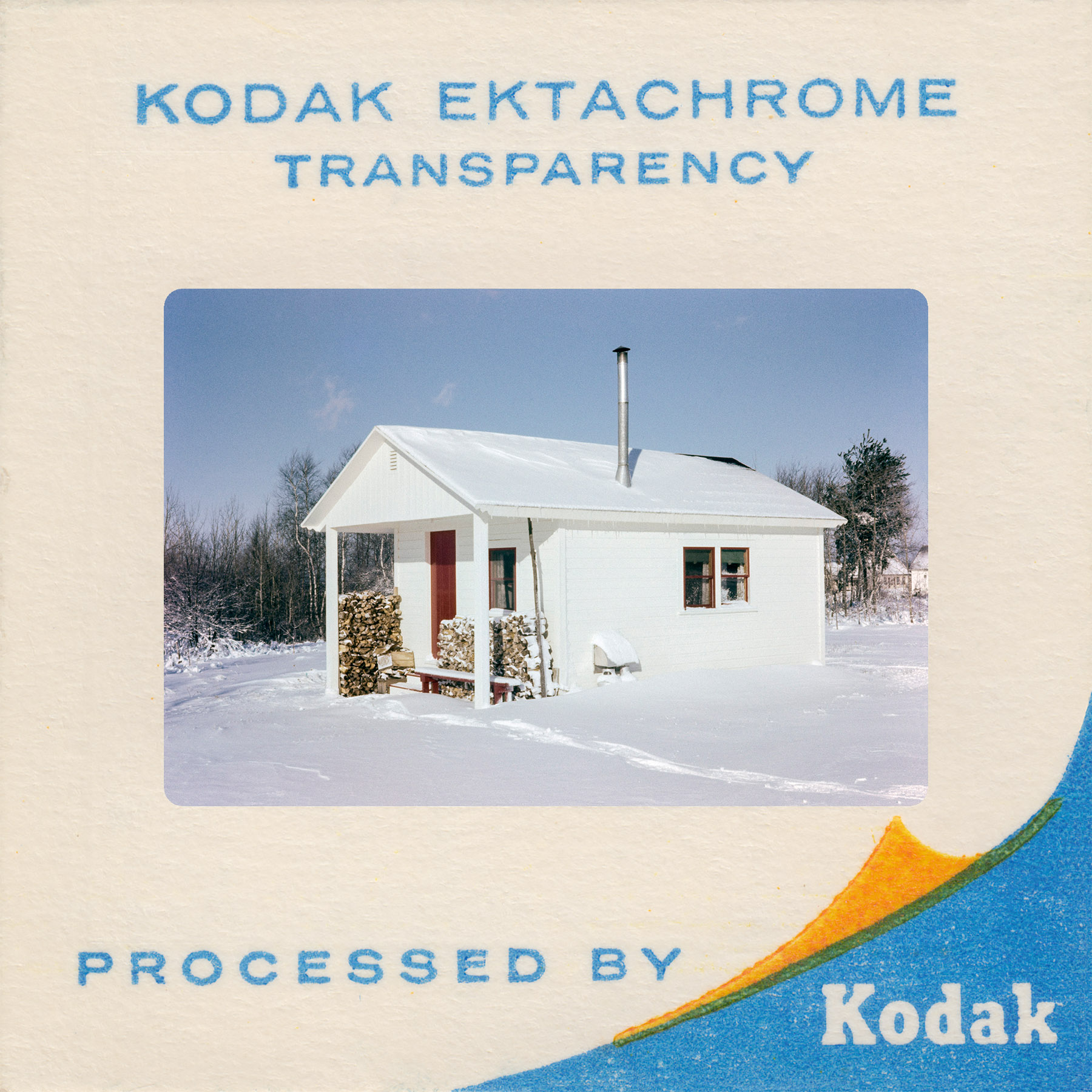 |
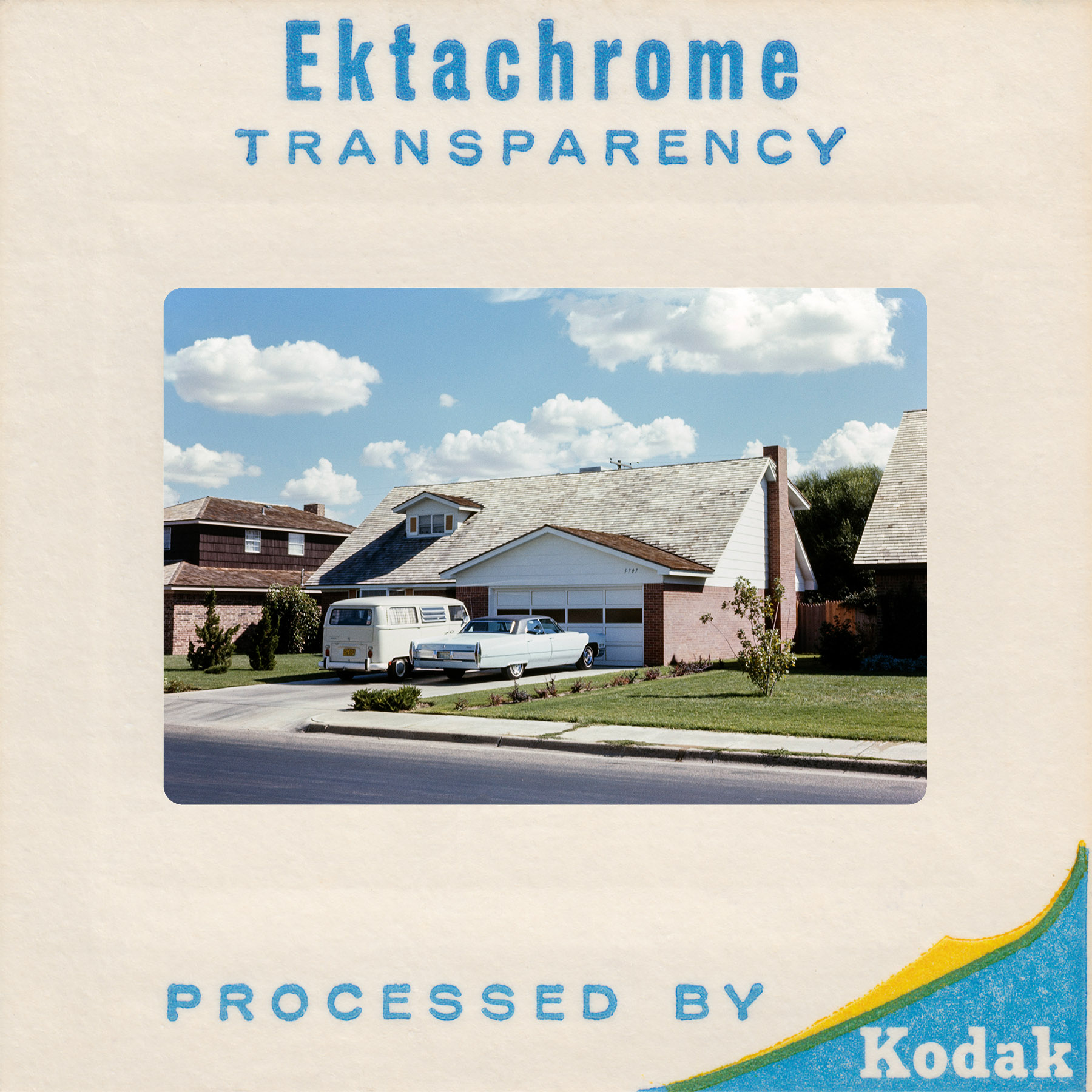 |
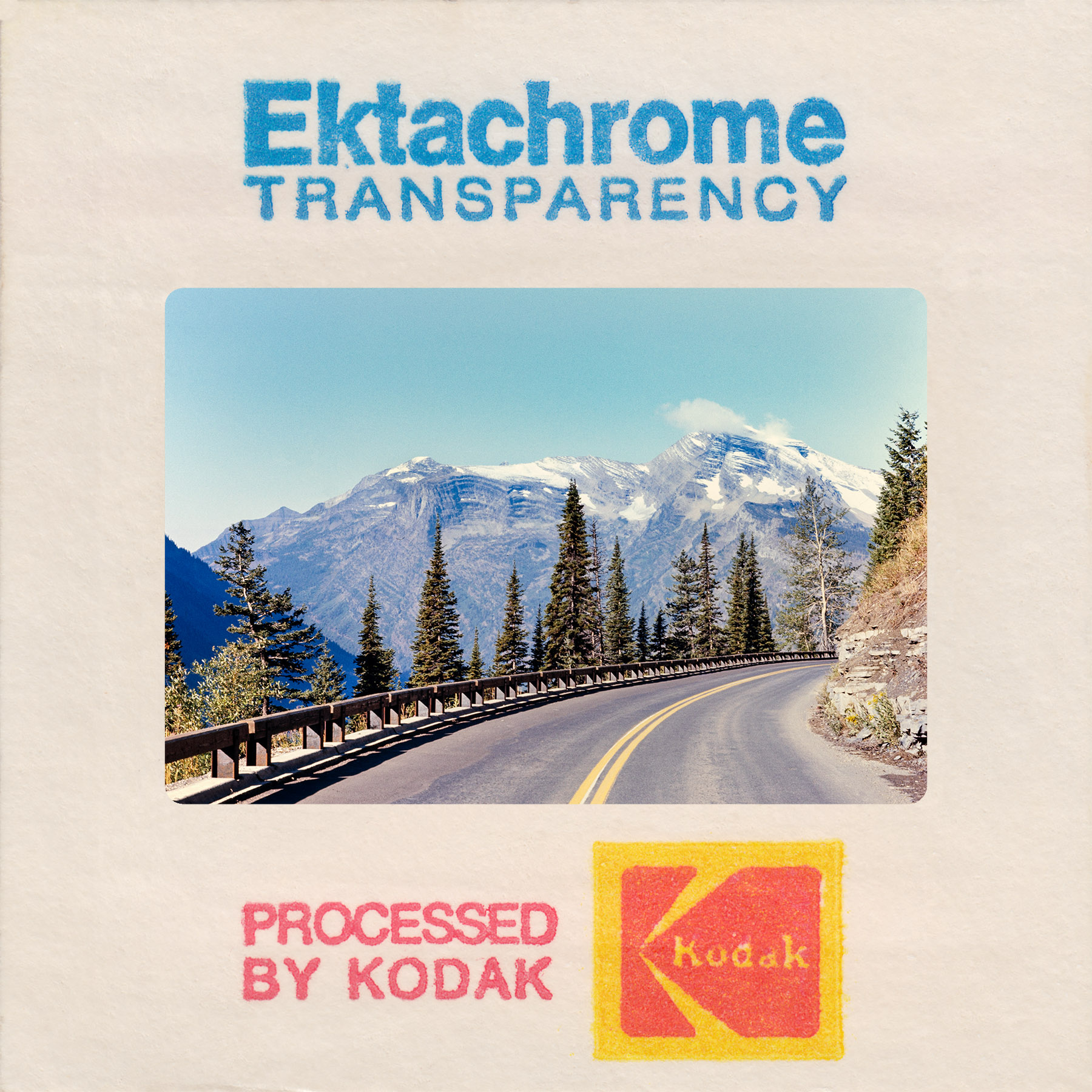 |
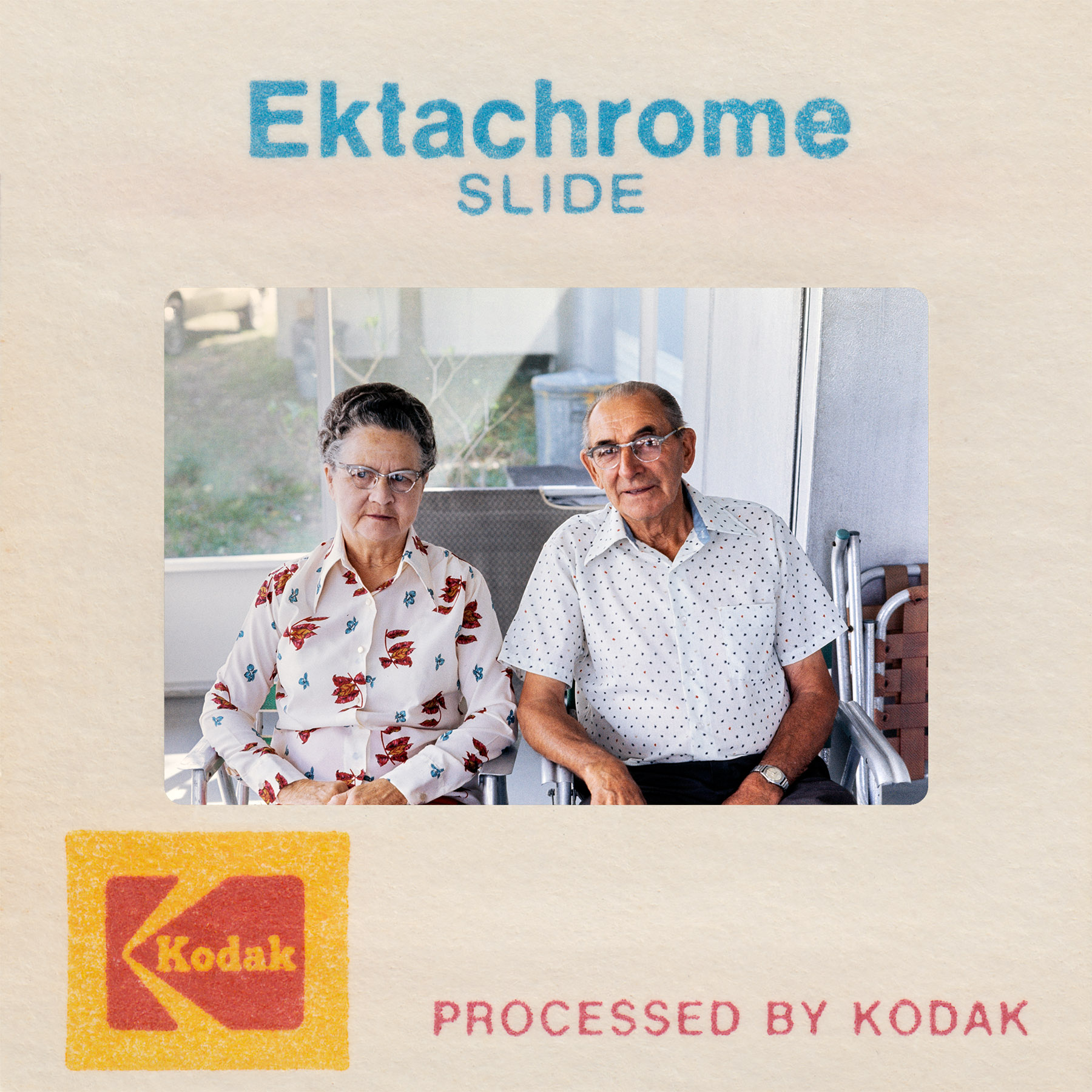 |
| Ektachrome 1960 | Ektachrome 1970 | Ektachrome 1973 | Ektachrome 1977 |
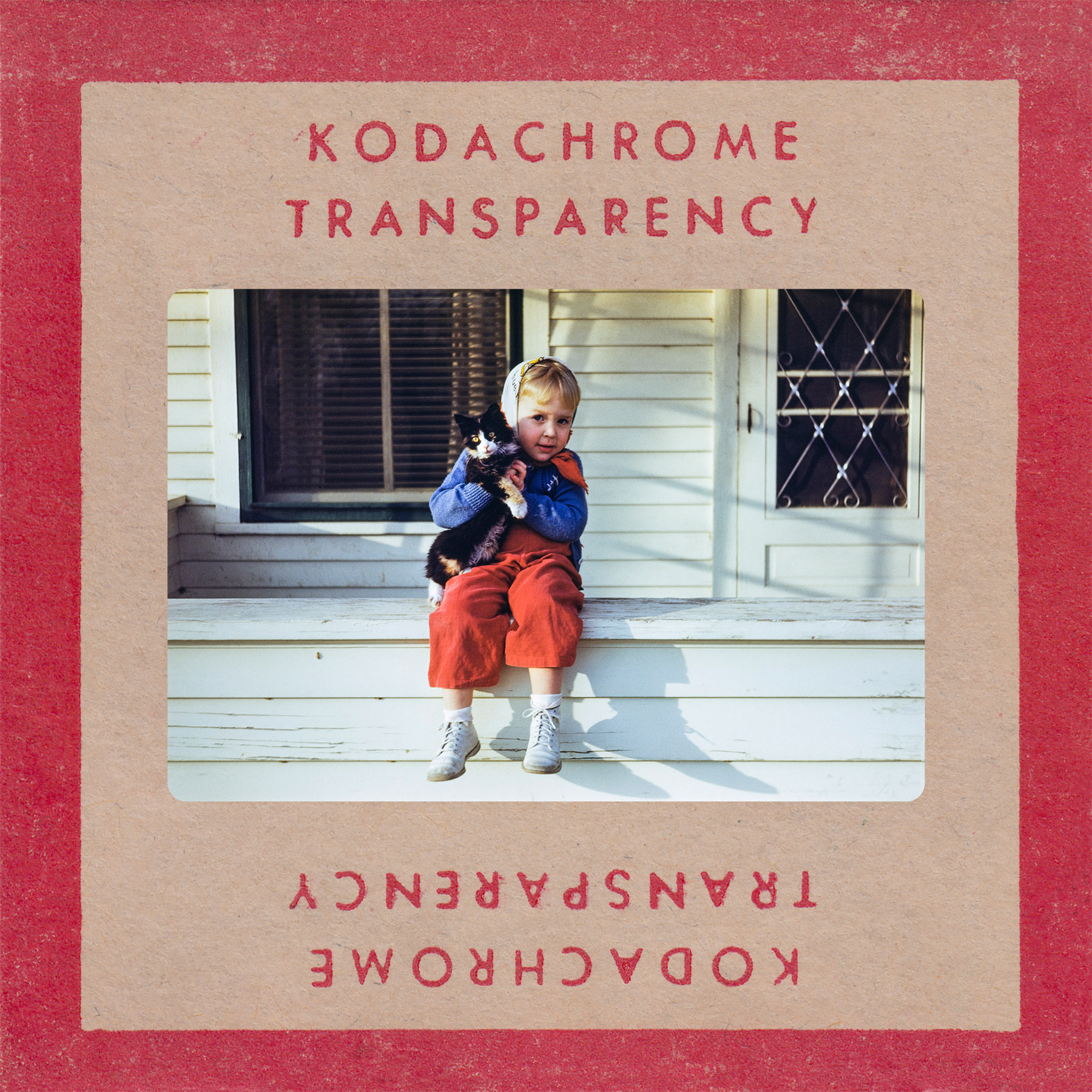 |
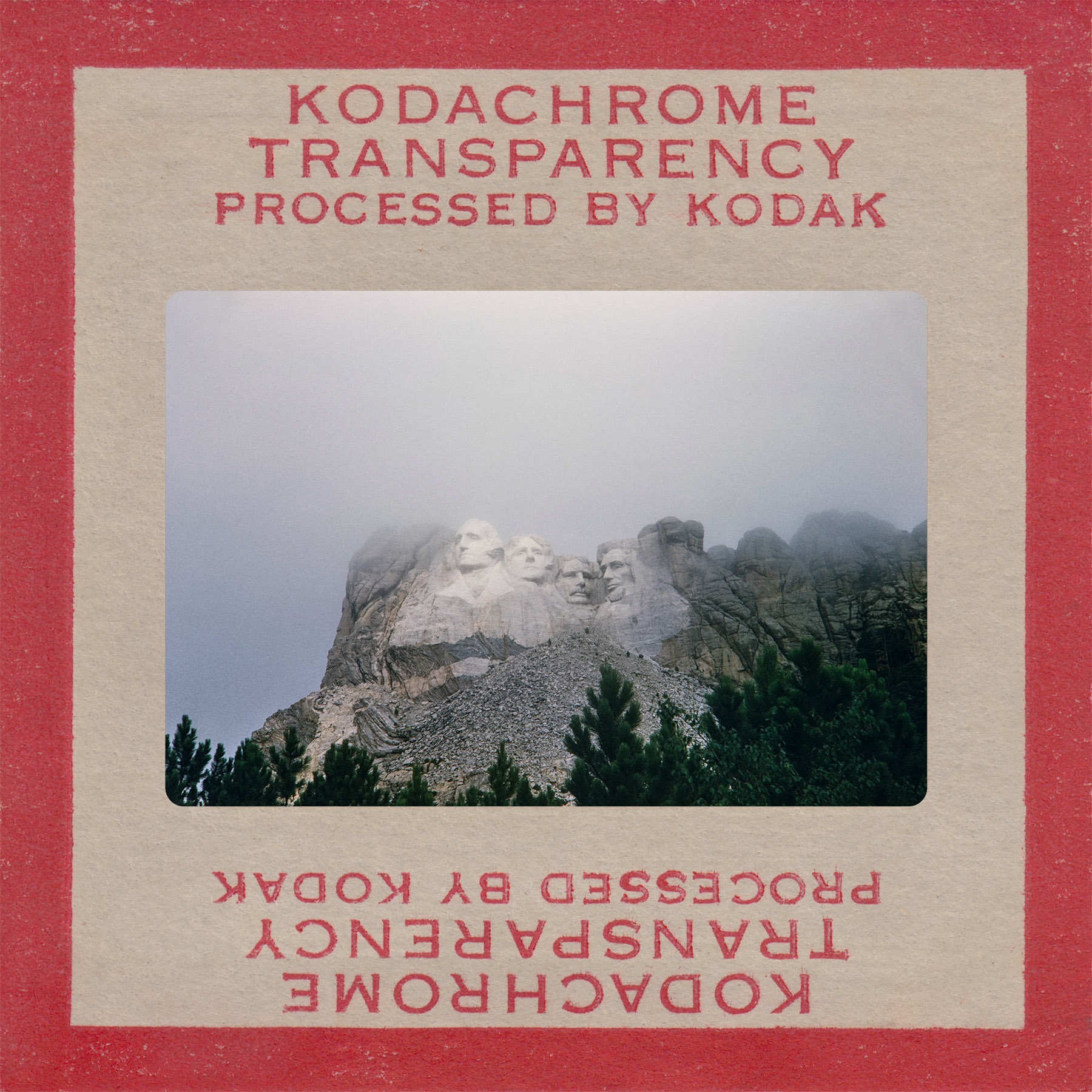 |
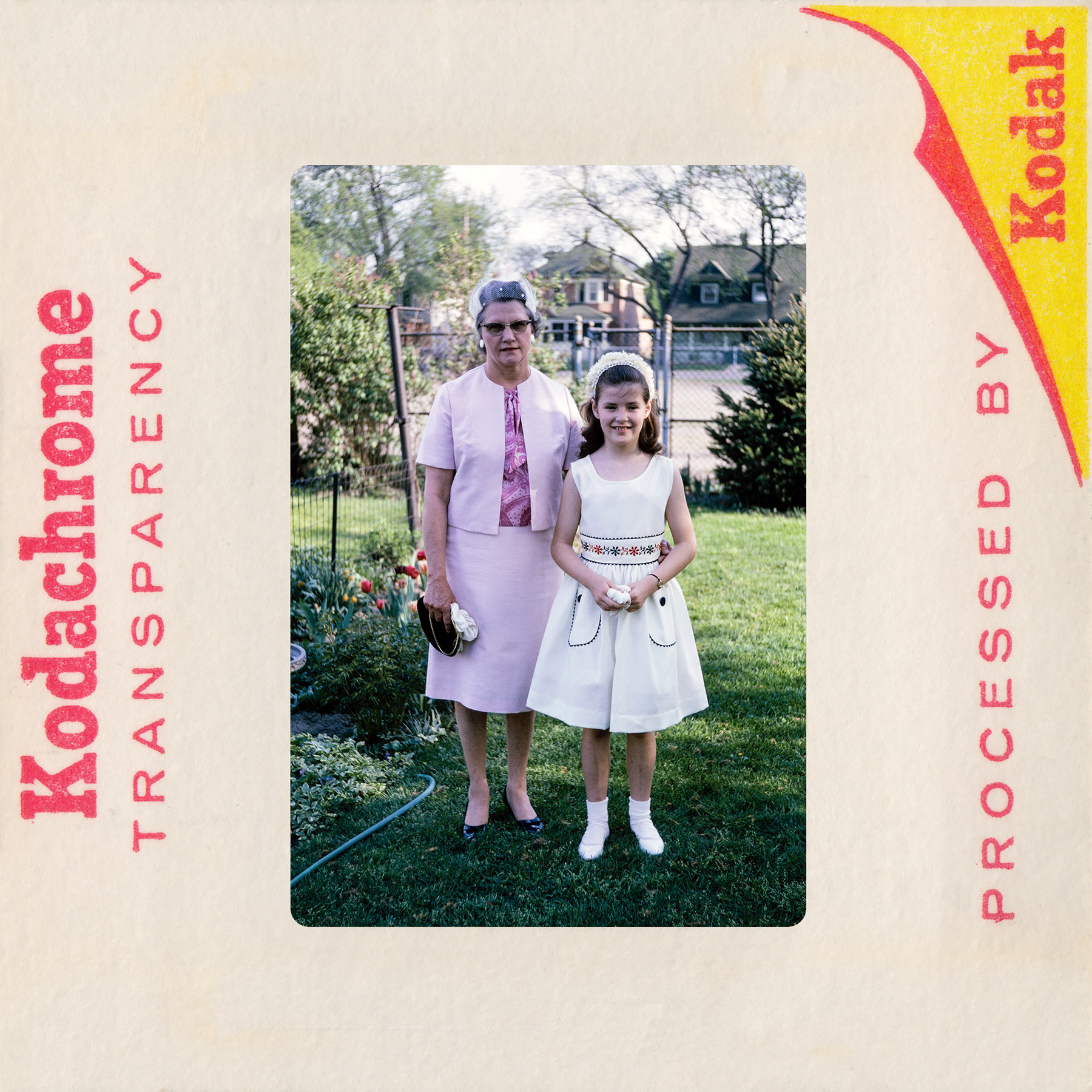 |
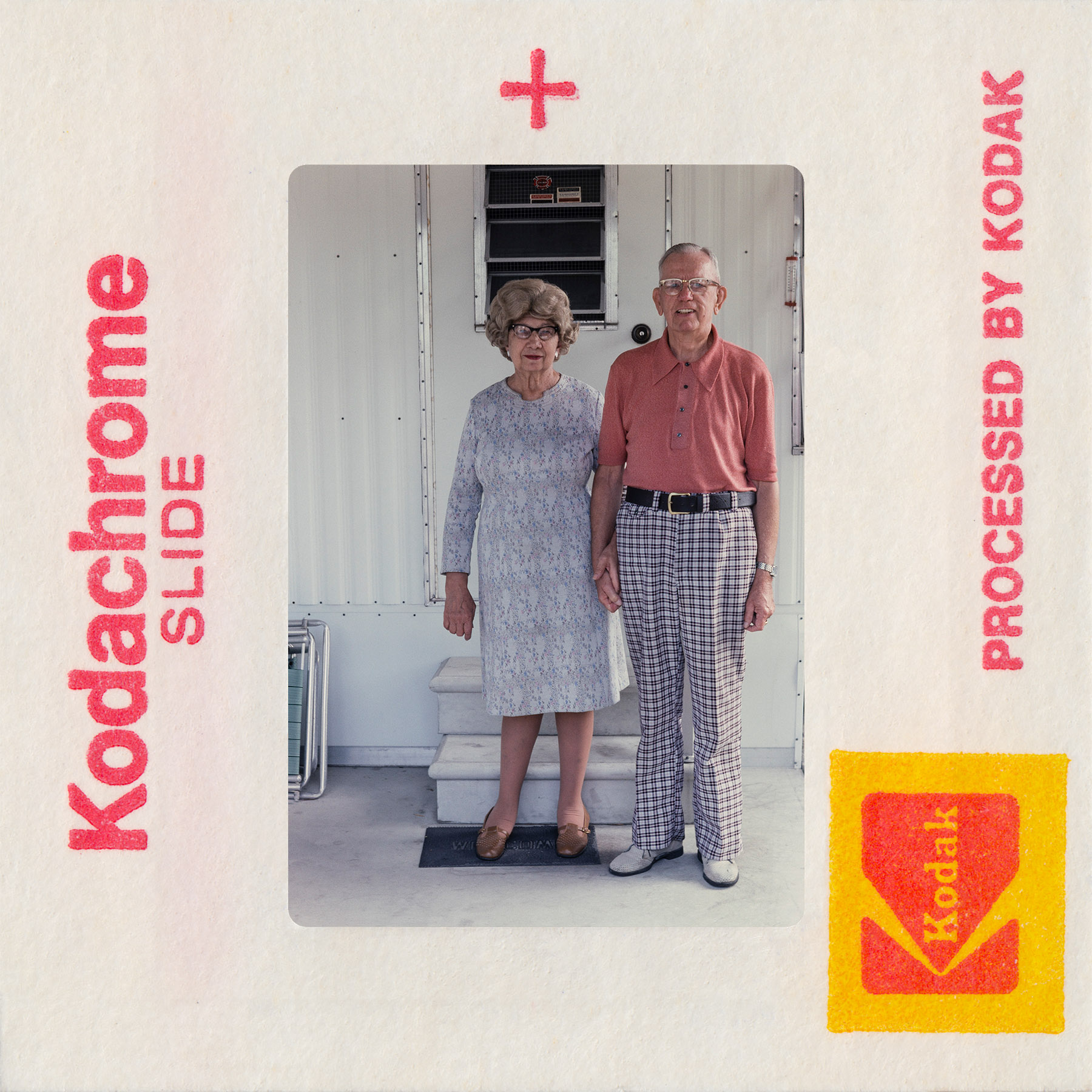 |
| Kodachrome 1951 | Kodachrome 1956 | Kodachrome 1965 | Kodachrome 1976 |
What did we do with the slides once we found them?
It’s fair to say that slide collecting quickly took over our lives—or at least our home! The boxes we found were stacking up and taking up a lot of space, so we decided: it’s definitely time to organize. But how?
Selecting
An American Story is not a random assortment of family and travel slides, it is a curated collection of slides that tell a story about American life in the 1950s through 1970s.
We made the decision to focus our collection for two reasons. First, we knew it would be impossible to scan and catalogue thousands and thousands of slides. Second, and more importantly, we realized the value of the project would be enhanced through careful selection and presentation of the most revealing images.
Our selection took a few factors into account. One baseline was technical quality—not necessarily artistic prowess, but at least correct exposure and solid composition. Among the quality photos, we selected the most interesting (for our purposes) subjects: images of family life, American landmarks, and historical events.
Sorting
Selected photos were then organized by theme, regardless of the family collection they came from. In a few cases we made and exception and kept a single photographer’s images together, primarily because the slides were a subject in-and-of themselves, such as: observations of service members deployed to Africa or South Korea, daily life of a family on an island in Maine, etc.
Scanning
We scanned all our slides using a Canon 5D Mark IV with the Canon 100mm Macro L lens. (If you’re interested in scanning, check our article comparing the Noritsu LS-600 and Canon 5D Mark IV for scanning slides.)
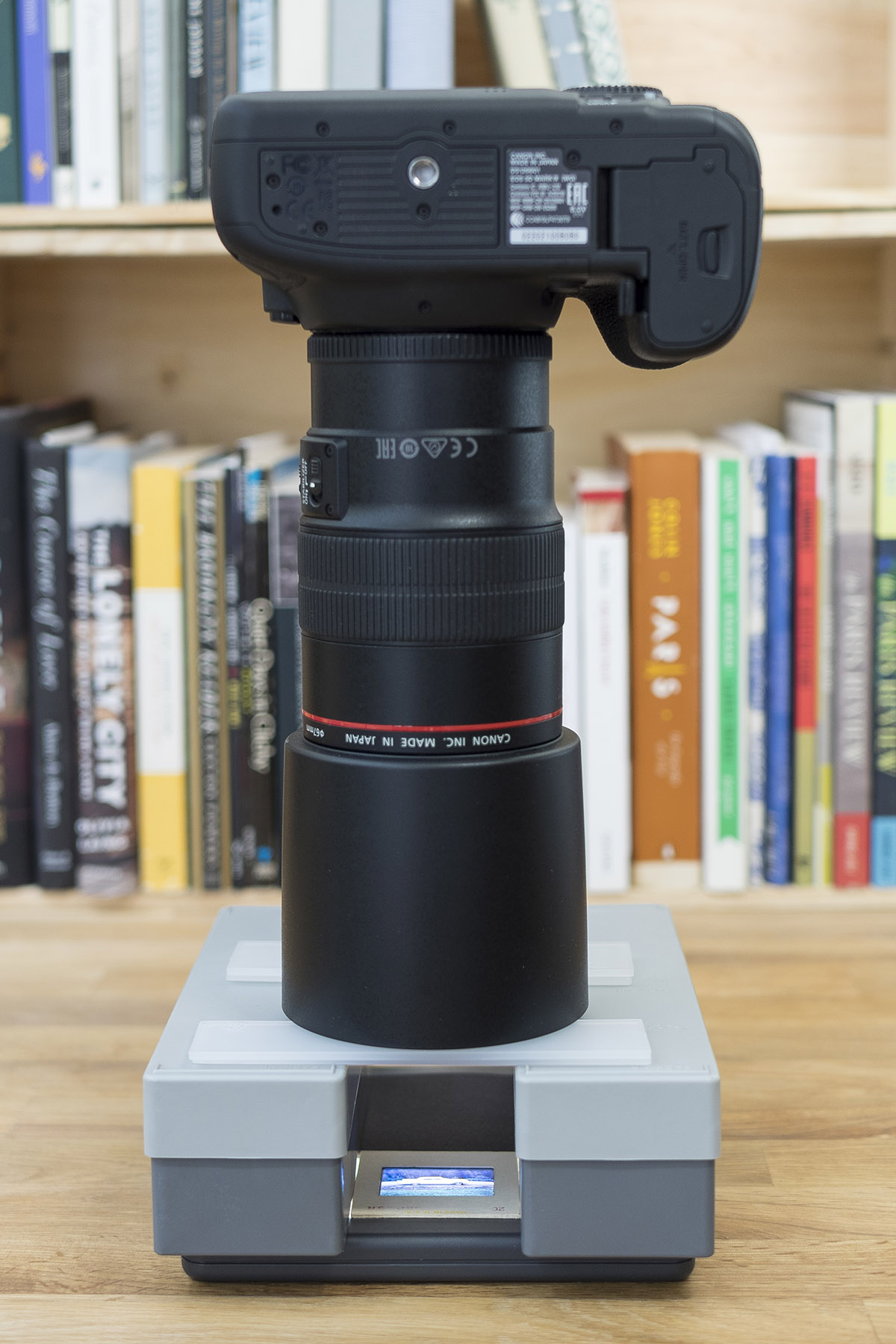 |
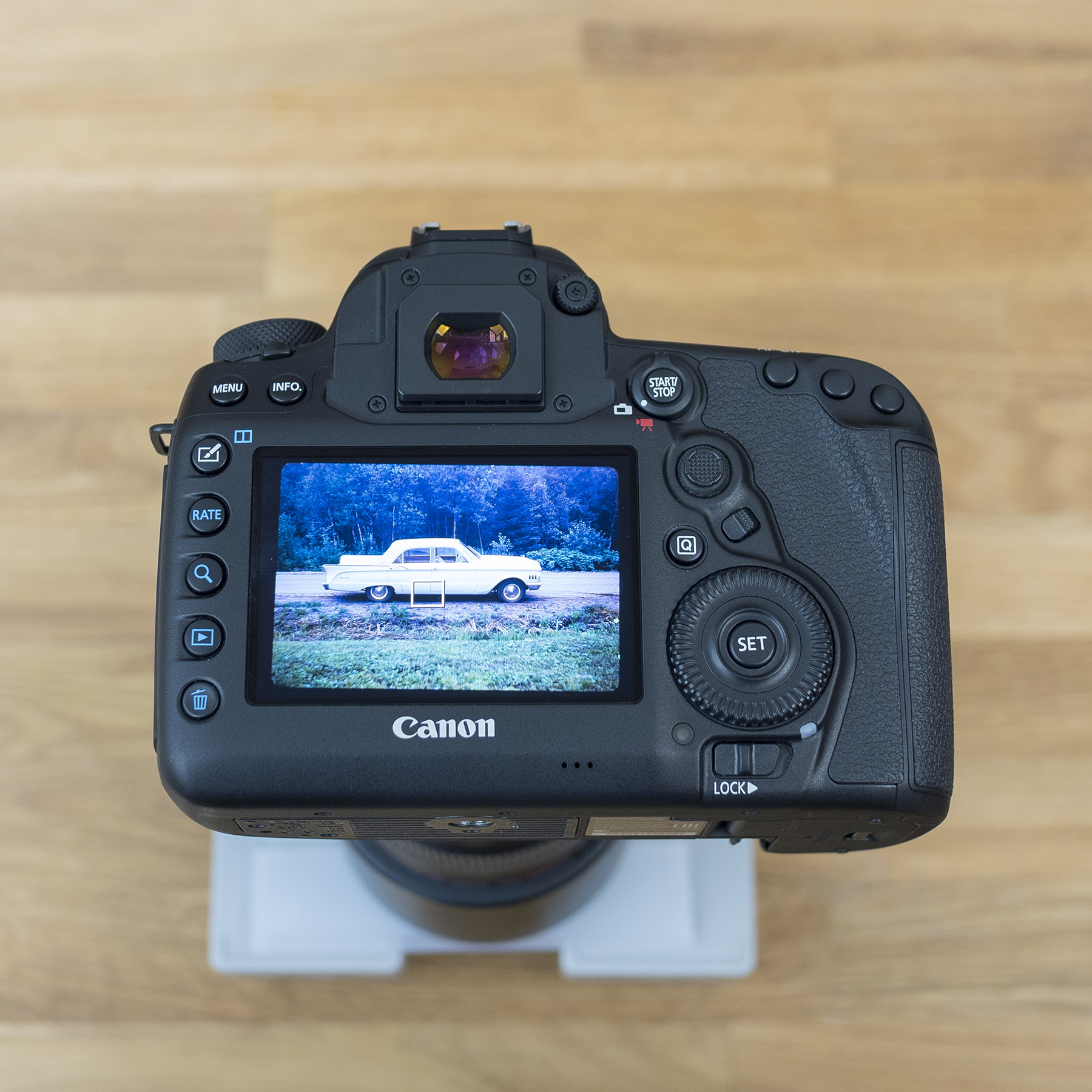 |
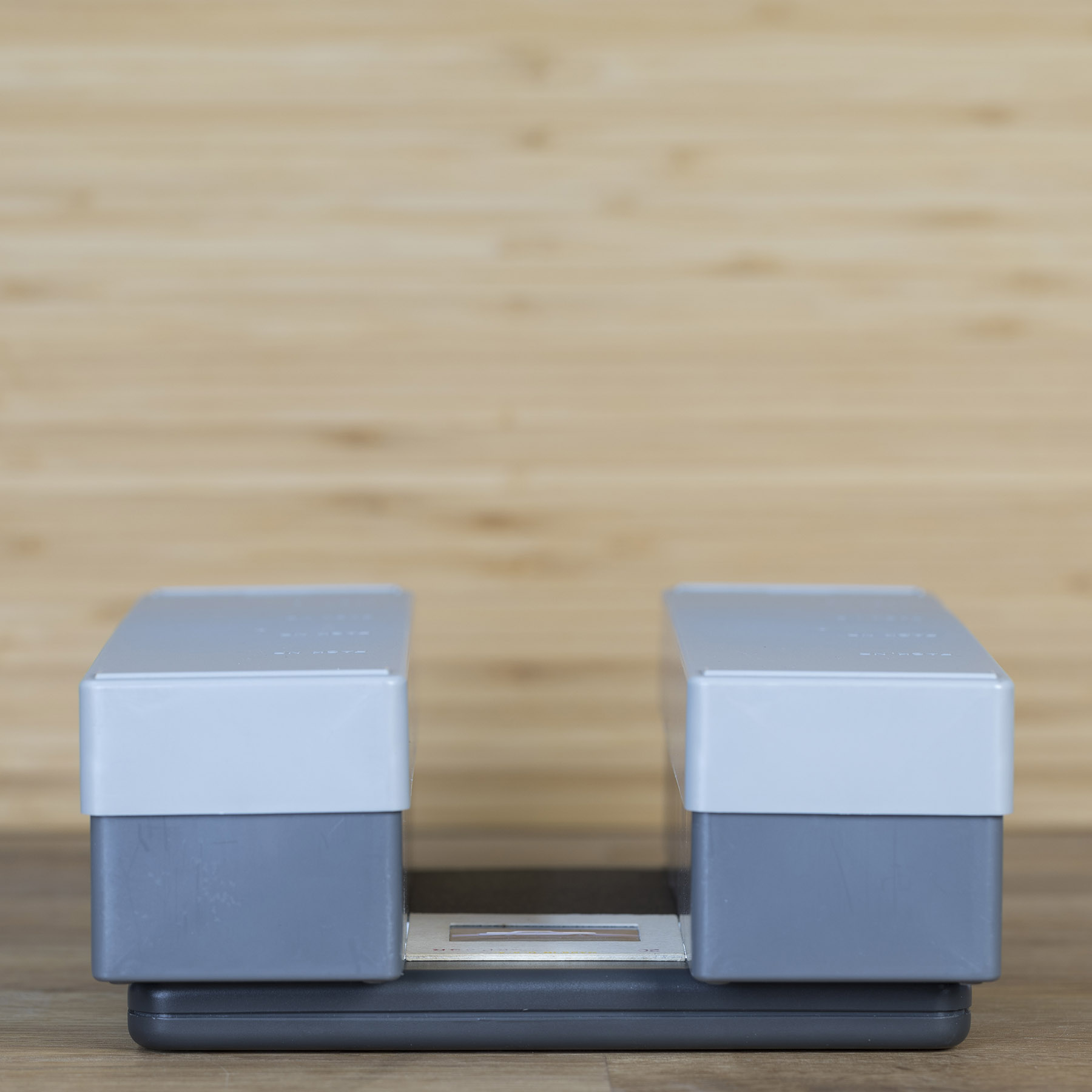 |
Storing
After being scanned, the slides were organized in archival sleeves and placed in binders. We chose Print File’s excellent archival sleeves and binders to protect the collection. To make it easier to find slides down the road, we kept the slides organized by theme.
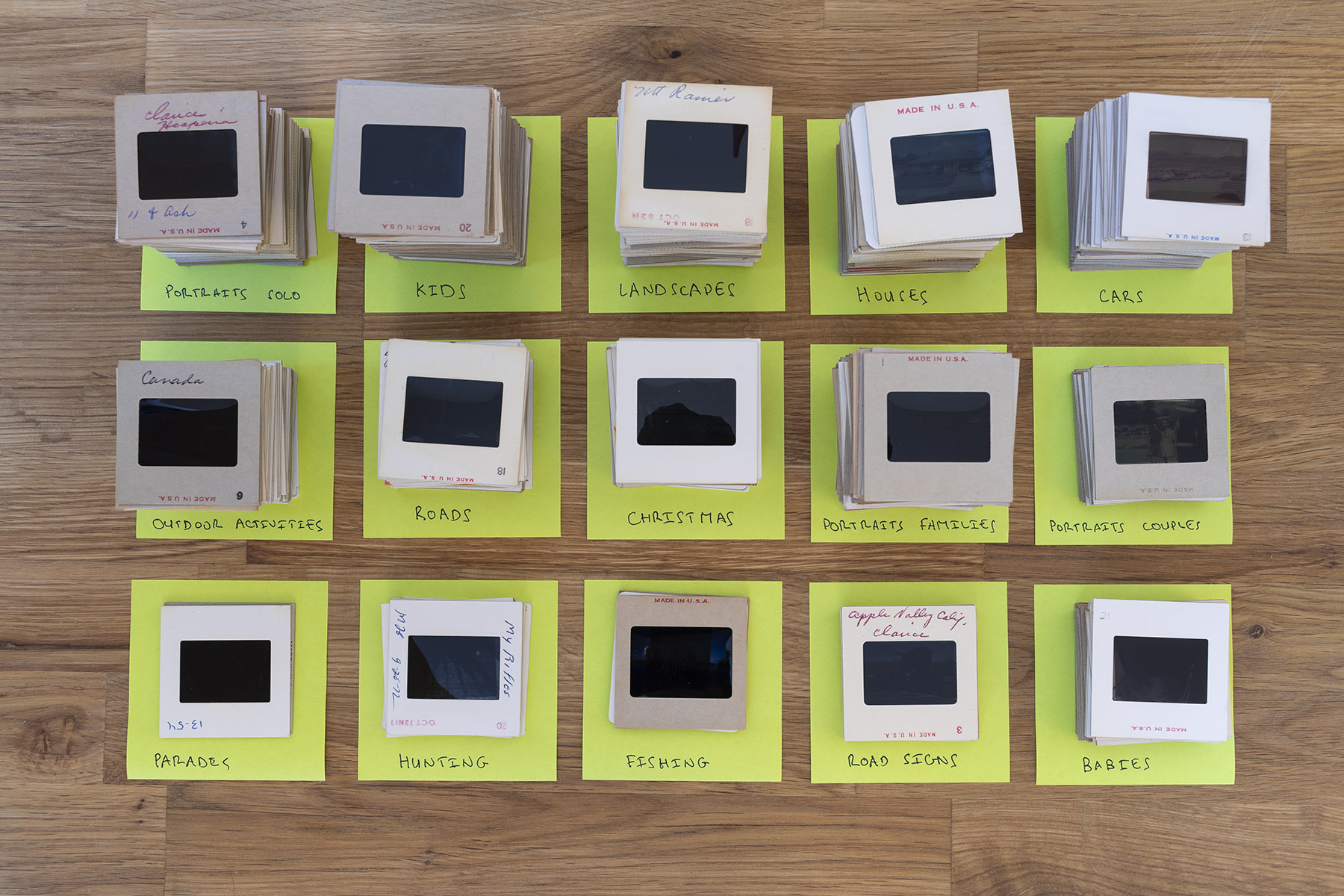 |
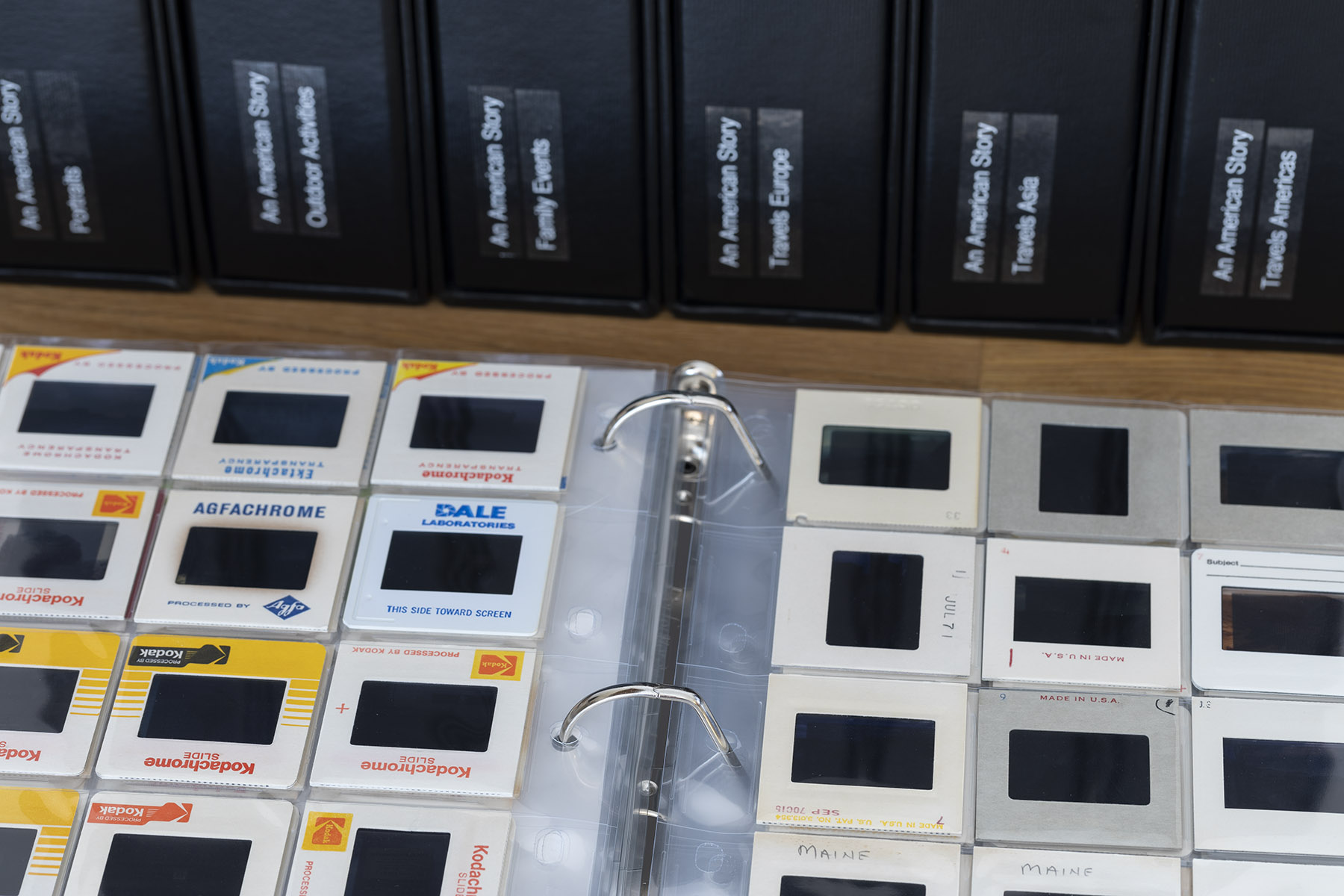 |
| Keeping slides sorted after being scanned | Slides sorted into binders for archival after being scanned |
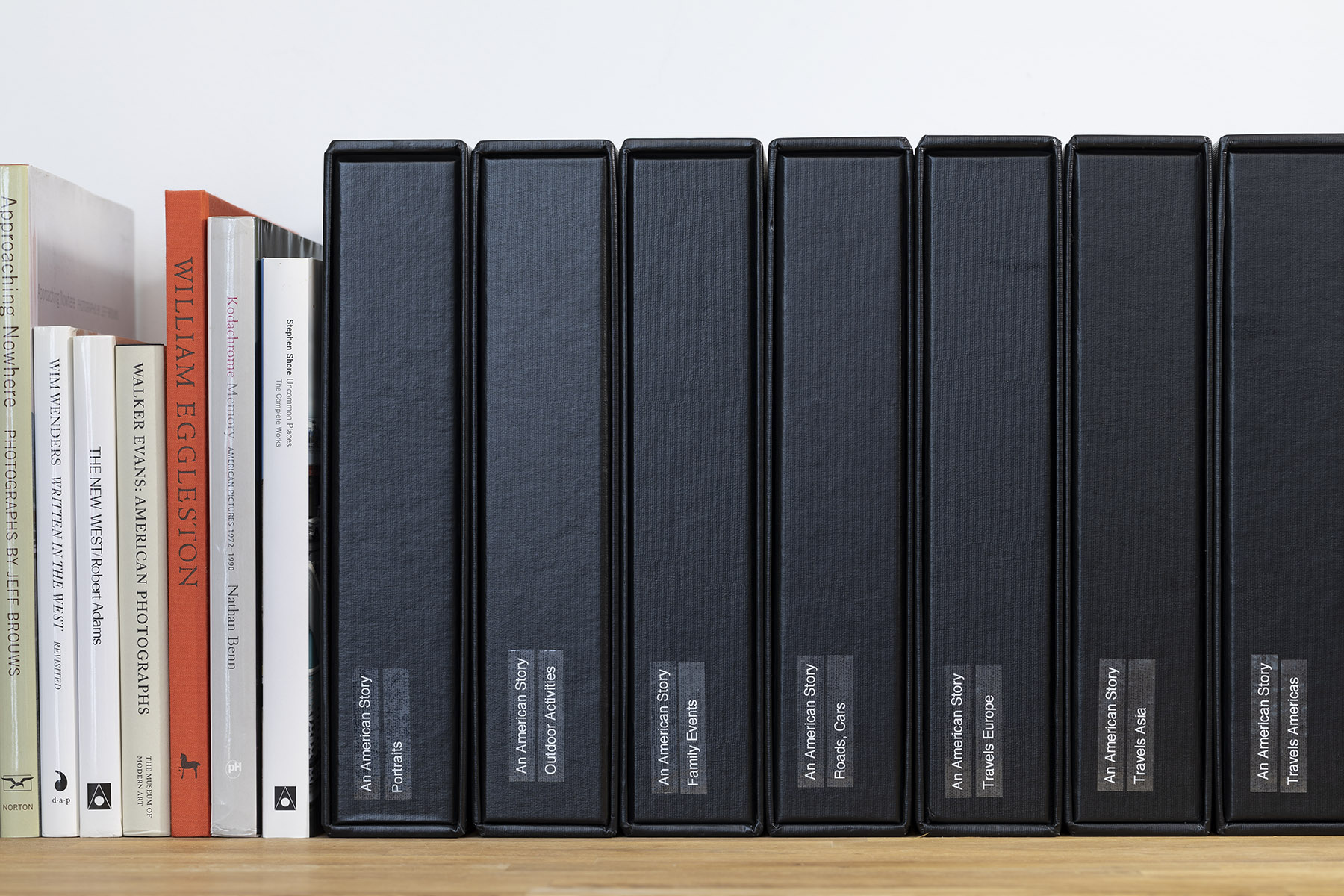 |
| An American Story collection |
But…what about privacy and copyrights?
At this point, you may be asking yourself two questions we asked ourselves early in the process: what about privacy? And copyrights?
The privacy question centers on the fact that the images we’re working with were taken for personal reasons—and in private places, such as homes. Taken these factors into account, should these photos be published at all? Some may say no. Another approach is to treat the images with respect. We are publishing only photos that place their subjects in a favorable light, and we anonymize then by mixing together photos from many families.
Currently, in the U.S., the copyright for a photo belongs to the photographer, not to the person who owns the photo. The only exception is when the photographer transfers all rights to the owner of the photo. Needleless to say, this transfer does not taken place for 99.9% of family slides purchased at thrift stores, on eBay, or at estate sales. There is, however, an option for legally publishing the photos: wait. In the U.S., the photographer only owns copyright until 70 years after death. This route obviously requires quite a bit of patience, so many projects like ours rely on another perspective: that these slides are “orphaned works.” For slides like these, the photographers are unknown, so publication falls into a legal gray area.
As you can imagine, both of these topics generate a lot of debate. Perhaps the most well-known precendent for a project like ours is the discovery, publication, and celebration of photos taken by Vivian Maier.
We’d love to hear your thoughts! Please share them below.
Follow us!
As a reminder, you can follow An American Story here on our site, where we’ll post additional articles, and on Instragram @AnAmericanStory, where we regularly post some of our favorite images.
Enjoy!
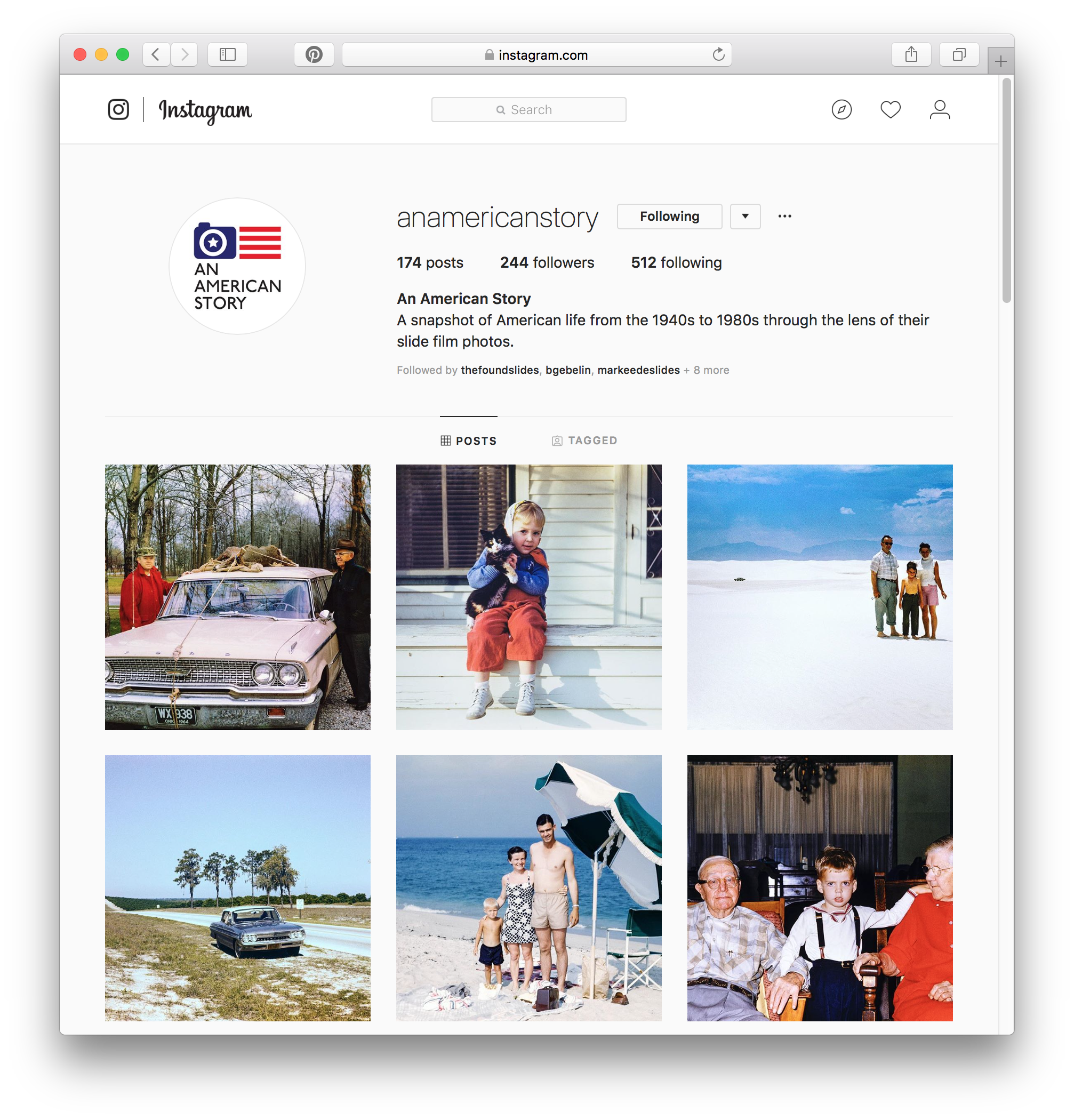 |
